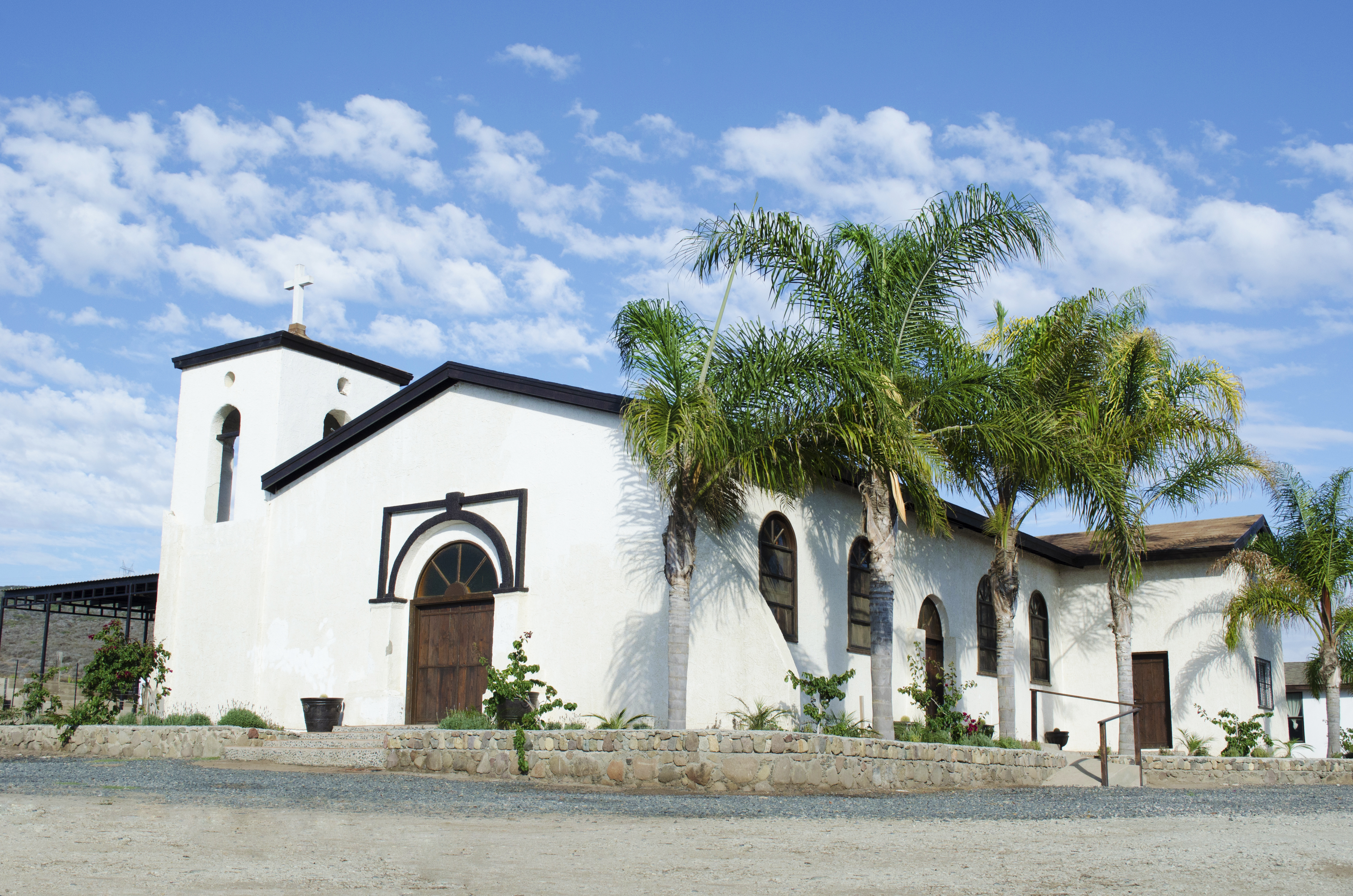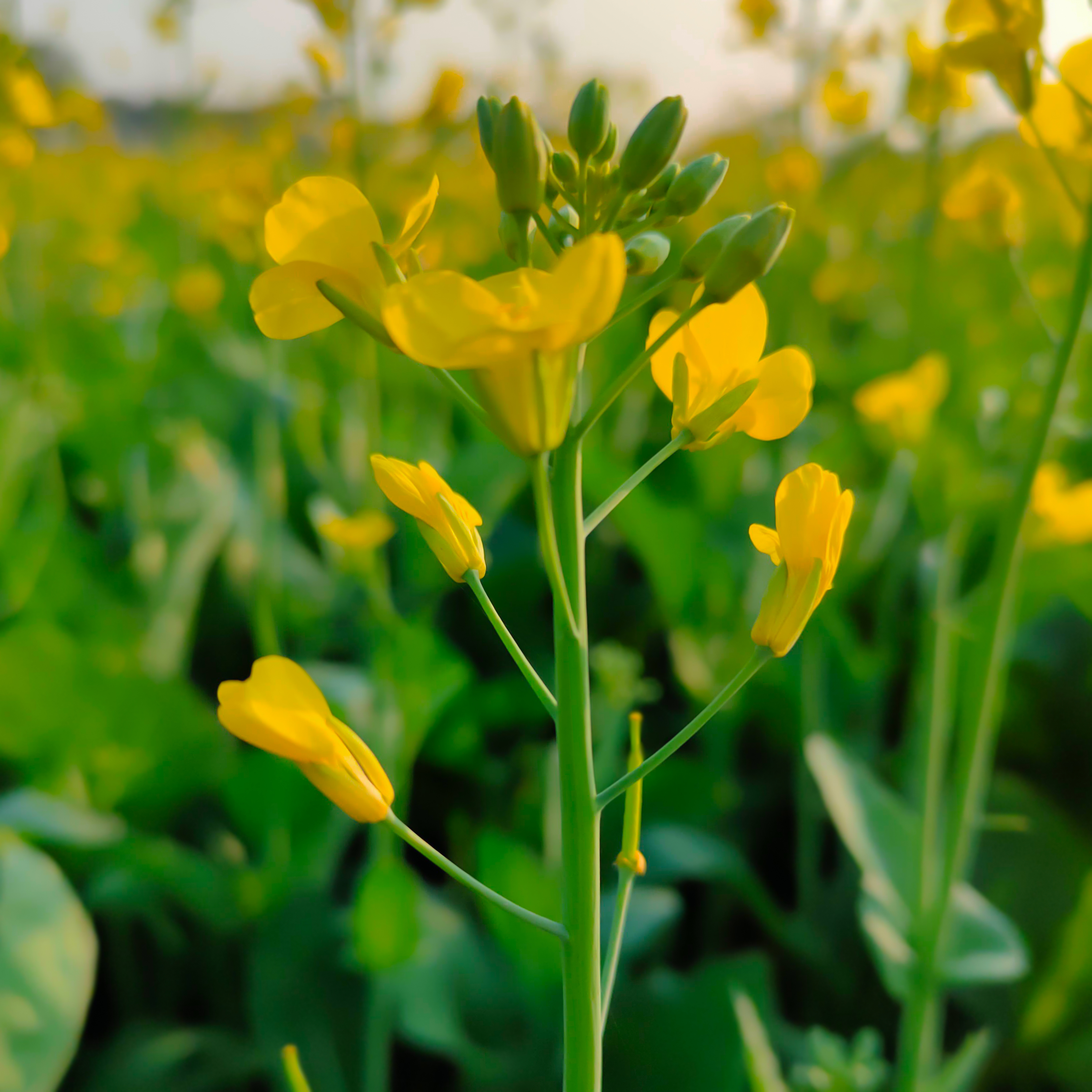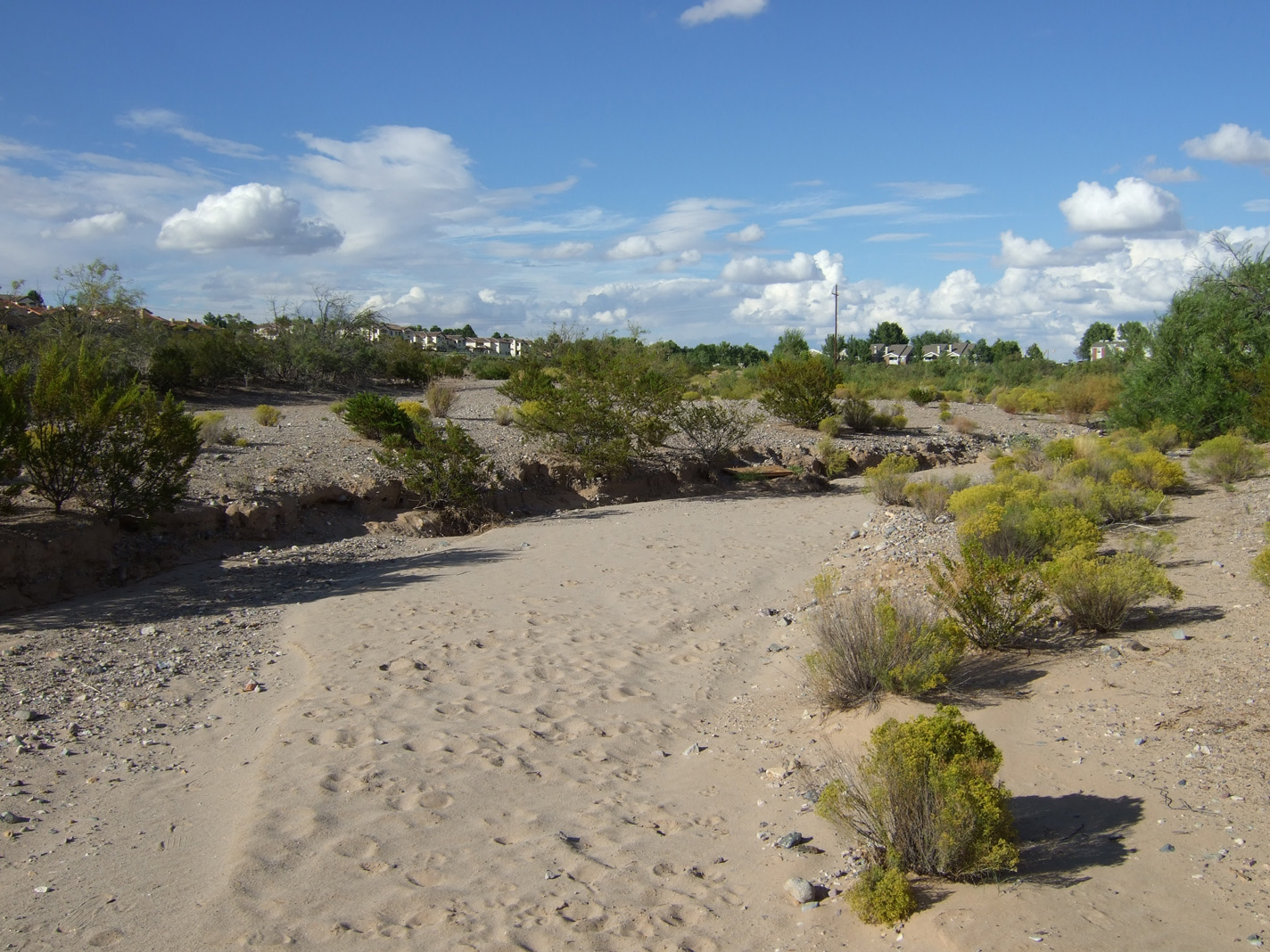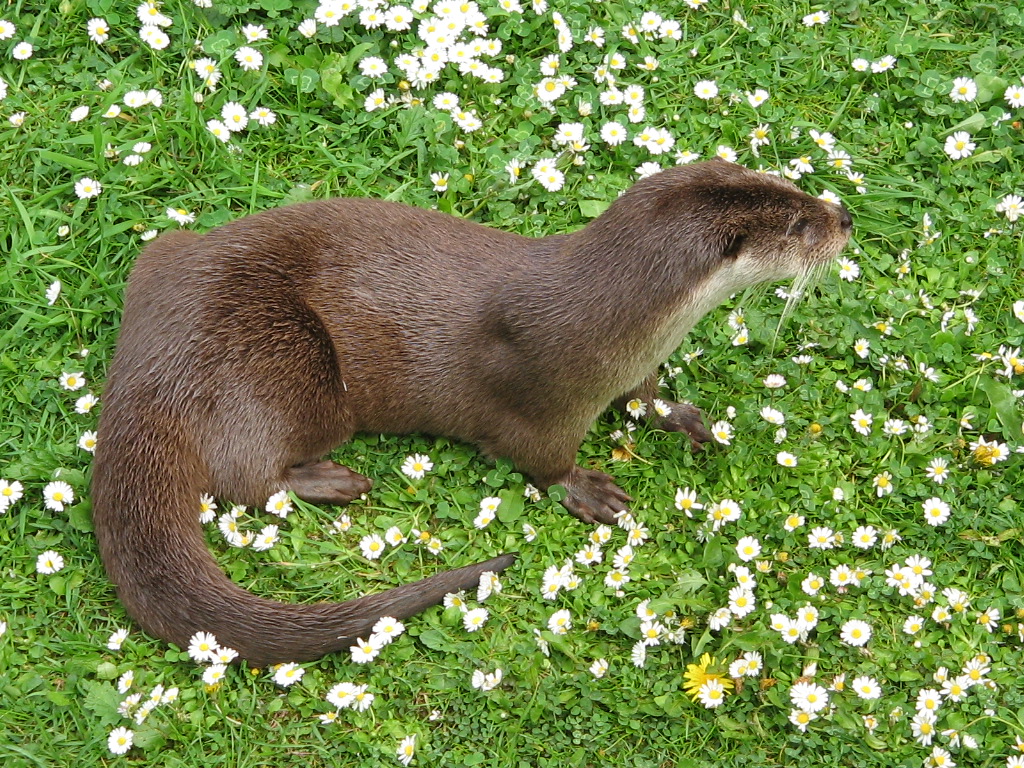|
Misión El Descanso
Mission El Descanso (), originally Misión San Miguel la Nueva, was a Spanish mission located in what is now Playas de Rosarito Municipality, Baja California. It was the founded by the Dominican missionary Tomás de Ahumada in 1810 in an area long inhabited by the Kumeyaay people. The mission was the penultimate Dominican mission to be founded and the only mission to be founded in what was then the short-lived Spanish province of Baja California. It is also the northernmost mission in what is now Mexico. Today, only stone foundations and ruined adobe walls survive. History Due to the frequent flooding of Mission San Miguel by the Río Guadalupe, missionary Tomás de Ahumada sought another site located on higher ground. The preferred site was located to the north at the head of a ridge overlooking a reliable creek and the ocean. Additional advantages of the site included the northerly location closer to the Presidio of San Diego, as well as the farming and grazing poten ... [...More Info...] [...Related Items...] OR: [Wikipedia] [Google] [Baidu] |
Playas De Rosarito Municipality
Playas de Rosarito Municipality () is located in the northwestern part of the Mexican state of Baja California comprising part of the Tijuana metropolitan area. It lies just south of the city of Tijuana. Its municipal seat is the city of Rosarito. According to the 2020 census, the municipality had a population of 126,890 inhabitants. Its area is 513.32 km2 (198.19 sq mi). History At the end of the 18th century, Spanish Dominican missionaries and friars gave the name of El Rosario to an indigenous settlement in the area. The town was part of the mission of San Miguel Arcangel de la Frontera, located a few miles to the south. The mission was founded on March 28, 1787 by the Dominican friar Luis Sales on the banks of the San Juan Bautista stream. Over time, the name of El Rosario became Rosarito. After the Mexican–American War and the Treaty of Guadalupe Hidalgo, the new Mexican border lay no more than 30 km (18.5 miles) from Rosarito. This brought the development of ... [...More Info...] [...Related Items...] OR: [Wikipedia] [Google] [Baidu] |
Adobe
Adobe (from arabic: الطوب Attub ; ) is a building material made from earth and organic materials. is Spanish for mudbrick. In some English-speaking regions of Spanish heritage, such as the Southwestern United States, the term is used to refer to any kind of earthen construction, or various architectural styles like Pueblo Revival or Territorial Revival. Most adobe buildings are similar in appearance to cob and rammed earth buildings. Adobe is among the earliest building materials, and is used throughout the world. Adobe architecture has been dated to before 5,100 BP. Description Adobe bricks are rectangular prisms small enough that they can quickly air dry individually without cracking. They can be subsequently assembled, with the application of adobe mud to bond the individual bricks into a structure. There is no standard size, with substantial variations over the years and in different regions. In some areas a popular size measured weighing about ; in other ... [...More Info...] [...Related Items...] OR: [Wikipedia] [Google] [Baidu] |
Mangrove
A mangrove is a shrub or tree that grows mainly in coastal saline water, saline or brackish water. Mangroves grow in an equatorial climate, typically along coastlines and tidal rivers. They have particular adaptations to take in extra oxygen and remove salt, allowing them to tolerate conditions that kill most plants. The term is also used for tropical coastal vegetation consisting of such species. Mangroves are taxonomically diverse due to convergent evolution in several plant families. They occur worldwide in the tropics and subtropics and even some temperate coastal areas, mainly between latitudes 30° N and 30° S, with the greatest mangrove area within 5° of the equator. Mangrove plant families first appeared during the Late Cretaceous to Paleocene epochs and became widely distributed in part due to the plate tectonics, movement of tectonic plates. The oldest known fossils of Nypa fruticans, mangrove palm date to 75 million years ago. Mangroves are salt-tolerant ... [...More Info...] [...Related Items...] OR: [Wikipedia] [Google] [Baidu] |
Mustard Plant
The mustard plant is any one of several plant species in the genera ''Brassica'', ''Rhamphospermum'' and ''Sinapis'' in the family Brassicaceae (the mustard family). Mustard seed is used as a spice. Grinding and mixing the seeds with water, vinegar, or other liquids creates the yellow condiment known as Mustard (condiment), prepared mustard. The seeds can also be pressed to make mustard oil, and the edible leaves can be eaten as Brassica juncea, mustard greens. Many vegetables are cultivated varieties of mustard plants; domestication may have begun 6,000 years ago. History Although some varieties of mustard plants were well-established crops in Hellenistic and Roman Empire, Roman times, Daniel Zohary, Zohary and Hopf note, "There are almost no Archaeology, archeological records available for any of these crops." Wild forms of mustard and its relatives, the radish and turnip, can be found over West Asia and Europe, suggesting their domestication took place somewhere in that ar ... [...More Info...] [...Related Items...] OR: [Wikipedia] [Google] [Baidu] |
Typha
''Typha'' is a genus of about 30 species of monocotyledonous flowering plants in the family Typhaceae. These plants have a variety of common names, in British English as bulrushStreeter D, Hart-Davies C, Hardcastle A, Cole F, Harper L. 2009. ''Collins Flower Guide''. Harper Collins or (mainly historically) reedmace, in American English as cattail, or punks, in Australia as cumbungi or bulrush, in Canada as bulrush or cattail, and in New Zealand as raupō, bullrush, cattail or reed. Other taxa of plants may be known as bulrush, including some Cyperaceae, sedges in ''Scirpus'' and related genera. The genus is largely distributed in the Northern Hemisphere, where it is found in a variety of wetland habitats. The rhizomes are edible, though at least some species are known to accumulate toxins and so must first undergo treatment before being eaten. Evidence of preserved starch grains on grinding stones suggests they were already eaten in Europe 30,000 years ago. Description ''Typ ... [...More Info...] [...Related Items...] OR: [Wikipedia] [Google] [Baidu] |
Purslane
Purslane is a common name for several mostly unrelated plants with edible leaves and may refer to: * Portulacaceae, a family of succulent flowering plants, and especially: ** '' Portulaca oleracea'', a species of ''Portulaca'' eaten as a leaf vegetable, known as summer purslane ** '' Portulaca grandiflora'', moss rose, or moss-rose purslane * '' Claytonia perfoliata'', miner's lettuce or winter purslane * '' Claytonia sibirica'', pink purslane * '' Halimione portulacoides'', sea purslane * '' Sesuvium portulacastrum'', shoreline purslane * '' Honckenya peploides'', also called sea purslane * '' Portulacaria afra'', purslane tree {{Plant common name ... [...More Info...] [...Related Items...] OR: [Wikipedia] [Google] [Baidu] |
Watercress
Watercress or yellowcress (''Nasturtium officinale'') is a species of aquatic flowering plant in the cabbage family, Brassicaceae. Watercress is a rapidly growing perennial plant native to Eurasia. It is one of the oldest known leaf vegetables consumed by humans. Watercress and many of its relatives, such as garden cress, mustard, radish, and wasabi, are noteworthy for their piquant flavors. Description Watercress can grow up to in length. The stems are hollow and float in water. The leaf structure is pinnately compound. Small, white, and green inflorescences are produced in clusters and are frequently visited by insects, especially hoverflies, such as '' Eristalis'' flies. Taxonomy Watercress is listed in some sources as belonging to the genus ''Rorippa'', although molecular evidence shows those aquatic species with hollow stems are more closely related to ''Cardamine'' than ''Rorippa''. Despite the Latin name, watercress is not particularly closely related to the fl ... [...More Info...] [...Related Items...] OR: [Wikipedia] [Google] [Baidu] |
Arroyo (watercourse)
An arroyo ( (from Spanish Language, Spanish ''arroyo'' (, "brook"))) or wash is a dry Stream#Other terminology, watercourse that temporarily or seasonally fills and flows after sufficient rain. Flash floods are common in arroyos following thunderstorms. It is akin to the Catalan language, Catalan rambla, which stems from the Arabic ''rámla'', "dry river". Similar landforms are referred to as ''wadi'' (in North Africa and Western Asia), ''chapp'' in the Gobi, ''laagate'' in the Kalahari, ''donga'' in South Africa, ''nullah'' in India, ''fiumare'' in Italy, and ''dry valley'' in England. The desert dry wash biome is restricted to the arroyos of the southwestern United States. Arroyos provide a water source to desert animals. Types and processes Arroyos can be natural fluvial landforms or constructed flood control channels. The term usually applies to a Grade (slope), sloped or mountainous terrain in xeric and desert climates. In addition: in many rural communities arroyos are ... [...More Info...] [...Related Items...] OR: [Wikipedia] [Google] [Baidu] |
Juncus
''Juncus'' is a genus of monocotyledonous flowering plants, commonly known as rushes. It is the largest genus in the family Juncaceae, containing around 300 species. Description Rushes of the genus ''Juncus'' are herbaceous plants that superficially resemble grasses or sedges. They have historically received little attention from botanists; in his 1819 monograph, James Ebenezer Bicheno described the genus as "obscure and uninviting". The form of the flower differentiates rushes from grasses or sedges. The flowers of ''Juncus'' comprise five whorls of floral parts: three sepals, three petals (or, taken together, six tepals), two to six stamens (in two whorls) and a stigma with three lobes. The stems are round in cross-section, unlike those of sedges, which are typically somewhat triangular in cross-section. In ''Juncus'' section ''Juncotypus'' (formerly called ''Juncus'' subg. ''Genuini''), which contains some of the most widespread and familiar species, the leaves are reduced ... [...More Info...] [...Related Items...] OR: [Wikipedia] [Google] [Baidu] |
El Descanso Mortar
EL, El or el may refer to: Arts and entertainment Fictional entities * El, a character from the manga series ''Shugo Chara!'' by Peach-Pit * Eleven (''Stranger Things'') (El), a fictional character in the TV series ''Stranger Things'' * El, family name of Kal-El (Superman) and his father Jor-El in the Superman dynasty * E.L. Faldt, character in the road comedy film ''Road Trip'' Music * Él Records, an independent record label from the UK founded by Mike Alway * ''Él ''(Lucerito album), a 1982 album by Lucerito * "Él", Spanish song by Rubén Blades from the album '' Caminando'' * "Él" (Lucía song), the Spanish entry performed by Lucía in the Eurovision Song Contest 1982 Other media * ''Él'', 1926 autobiographical novel by Mercedes Pinto * ''Él'' (film), a 1953 film by Luis Buñuel based on the 1926 novel * ''Él'' (visual novel), a 1991 Japanese adult visual novel * EL TV, an Azerbaijani regional television channel Companies and organizations * Estée Lauder Compan ... [...More Info...] [...Related Items...] OR: [Wikipedia] [Google] [Baidu] |
Tallow
Tallow is a rendered form of beef or mutton suet, primarily made up of triglycerides. In industry, tallow is not strictly defined as beef or mutton suet. In this context, tallow is animal fat that conforms to certain technical criteria, including its melting point. Commercial tallow commonly contains fat derived from other animals, such as lard from pigs, or even from plant sources. The solid material remaining after rendering is called cracklings, greaves, or graves. It has been used mostly for animal food, such as dog food. In the soap industry and among soap-making hobbyists, the name tallowate is used informally to refer to soaps made from tallow. Sodium tallowate, for example, is obtained by reacting tallow with sodium hydroxide (lye, caustic soda) or sodium carbonate (washing soda). It consists chiefly of a variable mixture of sodium salts of fatty acids, such as oleic and palmitic.Ruth Winter (2007): ''A Consumerýs Dictionary of Household, Yard and Office ... [...More Info...] [...Related Items...] OR: [Wikipedia] [Google] [Baidu] |
Otter
Otters are carnivorous mammals in the subfamily Lutrinae. The 13 extant otter species are all semiaquatic, aquatic, or marine. Lutrinae is a branch of the Mustelidae family, which includes weasels, badgers, mink, and wolverines, among other animals. Otters' habitats include dens known as holts or couches, with their social structure described by terms such as dogs or boars for males, bitches or sows for females, and pups or cubs for offspring. Groups of otters can be referred to as a bevy, family, lodge, romp, or raft when in water, indicating their social and playful characteristics. Otters are known for their distinct feces, termed spraints, which can vary in smell from freshly mown hay to putrefied fish. Otters exhibit a varied life cycle with a gestation period of about 60–86 days, and offspring typically stay with their family for a year. They can live up to 16 years, with their diet mainly consisting of fish and sometimes frogs, birds, or shellfish, depending ... [...More Info...] [...Related Items...] OR: [Wikipedia] [Google] [Baidu] |








